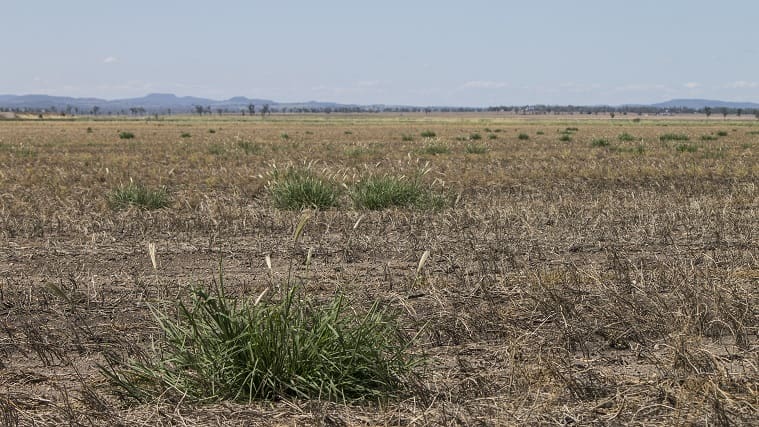
Feathertop Rhodes grass in clumps on fallow country.
THE Australian Pesticides and Veterinary Medicine Authority (APVMA) last week approved an emergency-permit application from Grain Producers Australia (GPA) on behalf of growers in northern New South Wales and southern Queensland.
The permit is valid Australia wide, and will provide a fallow-management option to control weeds including windmill grass and feathertop Rhodes grass emerging after recent heavy rain ahead of winter-crop planting.
Currently most available grassweed herbicides are untenable because the target weeds are resistant to or tolerant of the chemical, or use of the chemical brings with it restrictive plant-back periods.
This means cereal crops cannot be planted less than 12 weeks after haloxyfop and fluazifop has been used, and 18 weeks after quizalofop.
“The industry is grateful to the APVMA for the timely approval of this permit for growers and the ongoing support of the Grains Research and Development Corporation in the
generation and assembly of trial data that supported the application,” GPA chairman and Victorian grower Andrew Weidemann said.
To minimise risks of resistance development, the GPA emergency permit allows a double-knock approach with the clethodim treatment followed by an application of paraquat.
As these patches of resistant summer grass weeds are likely to be persistent, there will likely be the need to revisit these same areas the following season.
The permit has a plant-back period restriction of 30 days after application of clethodim, unless clethodim is registered for use in that crop.
The APVMA emergency permit PER89322 expires on 31 July 2021.
Currently glyphosate resistant populations of Awnless barnyard grass, liverseed grass and windmill grass (Chloris truncata) have been identified from regions of NSW and QLD.
Further compounding control difficulties during summer fallows is feathertop Rhodes grass, a major weed in broadacre cropping systems in Queensland and northern NSW,
which exhibits a high degree of tolerance to glyphosate.
Reliance on glyphosate alone is problematic for efficacy and resistance management, with increased selection pressure.
To improve weed control flexibility, weed control options utilising alternative modes of action are required.
The use of Group A herbicides has been the primary approach in dealing with this situation.
However, following recent rains and some flooding in southern Queensland and northern NSW, the use of most Group A herbicides presents issues with extensive plant-back restrictions.
There have also been supply issues with some group A herbicides, including propaquizafop.
Clethodim is currently approved for use in summer cropping situations for use against grasses including:
- Awnless Barnyard grass Echinocloa colona;
- Barnyard grass Echinocloa spp. galli;
- Crowsfoot grass Eleusine indica;
- Liverseed grass Urochloa panicoides; and,
- Summer grass Digitaria spp.
As there were no other post-emergent grass selective herbicide options available for use in summer fallow situations, clethodim is being sought due to the range of grass weeds on currently registered labels.
Source: GPA

HAVE YOUR SAY